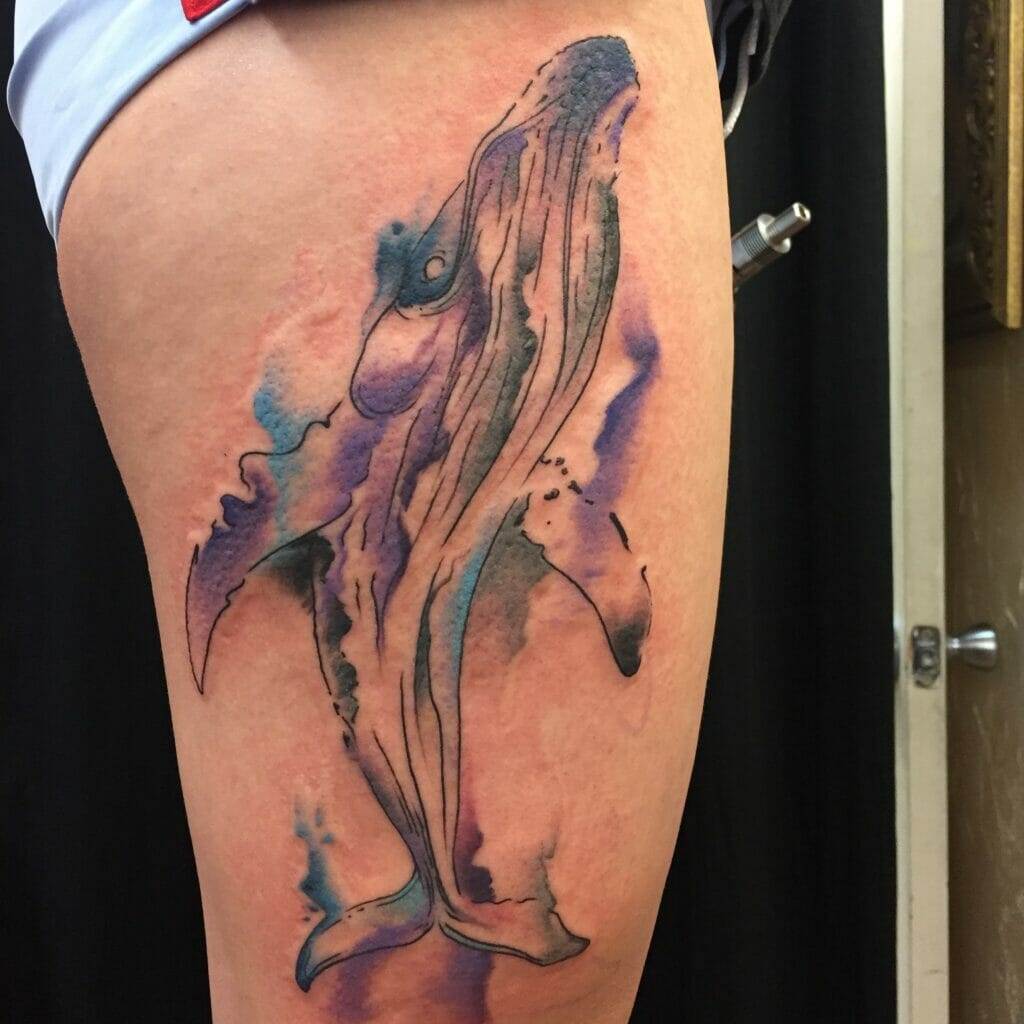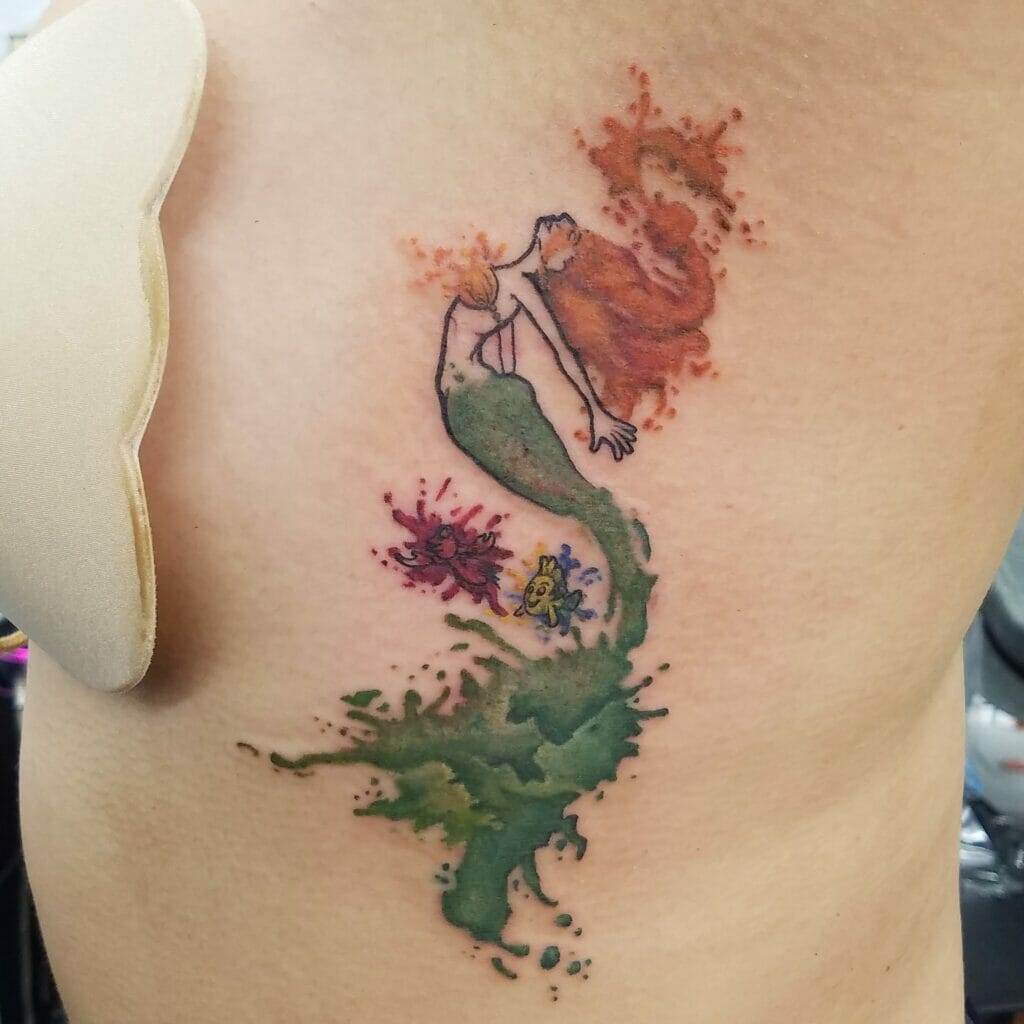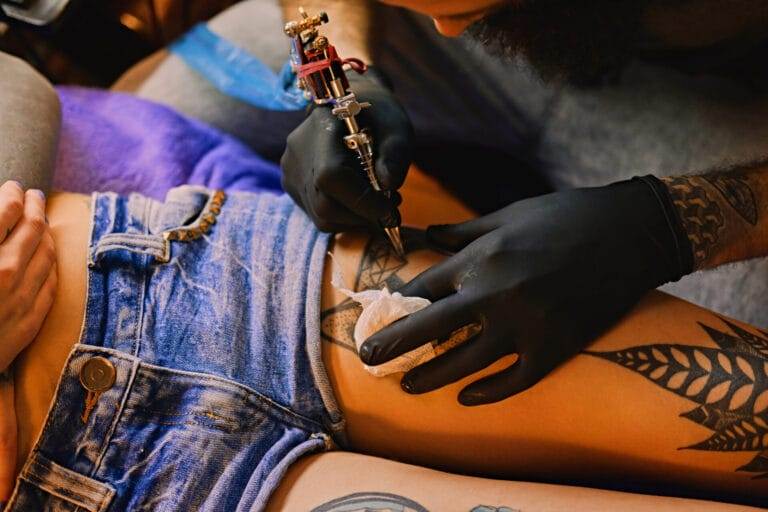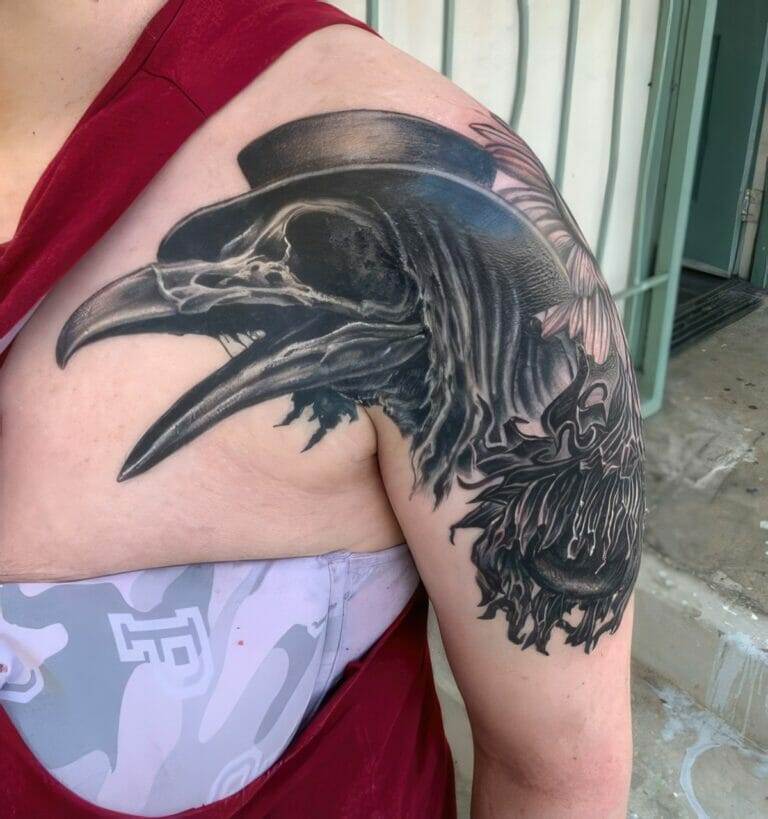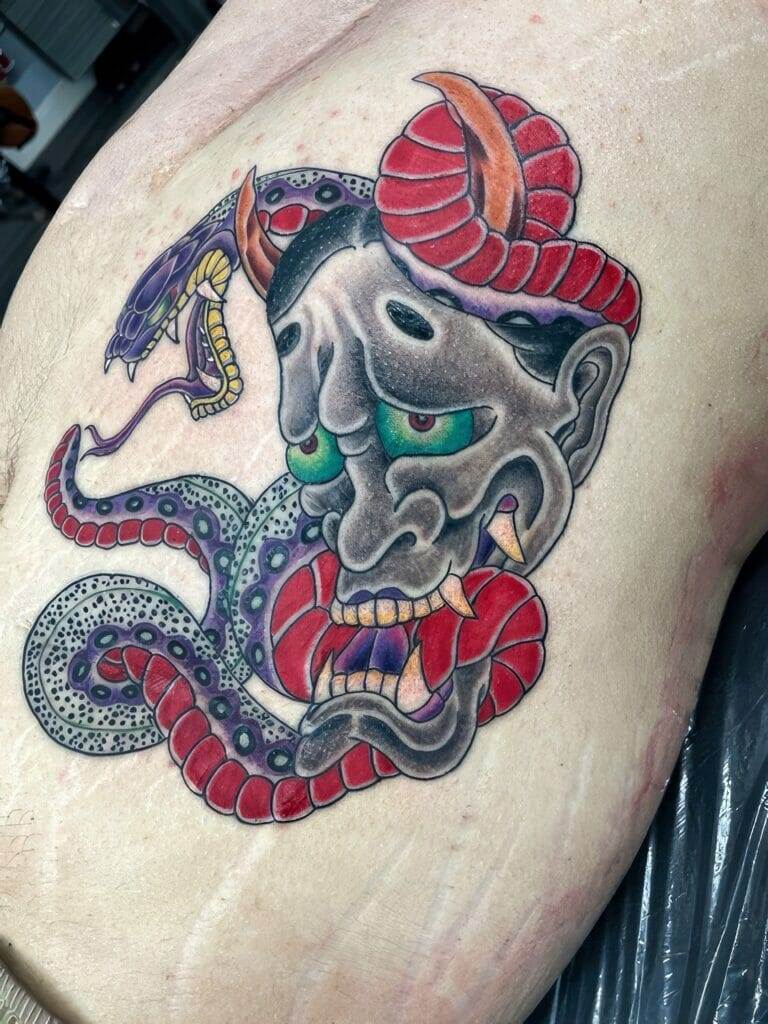
Tattoos have become increasingly popular in recent years, with more and more people choosing to adorn their bodies with permanent ink. But a tattoo is much more than just a design etched onto the skin. It is a form of self-expression, a work of art, and a symbol of personal significance. Tattoos have been used for centuries in different cultures around the world, each with their own unique meanings and traditions. Whether it’s a small symbol or a full sleeve, tattoos hold emotional and personal meaning for those who choose to get them.
In many cultures, tattoos hold deep significance and are seen as more than just body art. They can represent one’s beliefs, values, and cultural heritage. For example, in Polynesian culture, tattoos known as “tatau” are seen as a rite of passage and a way to connect with one’s ancestors. In Japanese culture, traditional irezumi tattoos are often associated with the yakuza and have complex symbolism. In Native American culture, tattoos can represent tribal affiliations and spiritual beliefs.
But even for those who do not have cultural or religious reasons for getting a tattoo, they still hold personal meaning. Tattoos can be a way to commemorate loved ones who have passed away, express one’s passions or interests, or simply serve as a reminder of an important moment or experience in one’s life. They can be a form of self-expression that allows individuals to showcase their unique personality and style.
Finding Inspiration: Where to Look for Tattoo Ideas
When it comes to finding inspiration for your tattoo design, there are countless resources available. One of the most popular ways to gather ideas is through online resources and social media platforms. Websites like Pinterest and Instagram are filled with thousands of tattoo images that can help spark your creativity. You can create boards or save posts that catch your eye, allowing you to compile a collection of designs that resonate with you.
Art and design books are another great source of inspiration. Whether it’s a book on traditional tattoo art or a collection of contemporary designs, flipping through the pages can help you discover new styles and ideas. You can also visit art galleries or attend tattoo conventions to see the work of different artists and get a sense of their unique styles.
Personal experiences and memories can also serve as inspiration for your tattoo. Think about moments or places that hold special meaning to you. It could be a favorite vacation spot, a beloved pet, or a significant event in your life. These personal connections can be translated into meaningful tattoo designs that are unique to you.
Lastly, collaborating with a tattoo artist is an excellent way to create a custom design that reflects your vision. Tattoo artists are skilled in translating ideas into artwork and can help bring your ideas to life. They can provide guidance on design elements, placement, and style, ensuring that your tattoo is not only visually appealing but also meaningful to you.
Choosing a Design: Factors to Consider Before Committing
Choosing the right design for your tattoo is an important decision that should not be taken lightly. There are several factors to consider before committing to a design.
Size, placement, and visibility are crucial considerations. Think about how large or small you want your tattoo to be and where on your body you want it placed. Consider the visibility of the tattoo and how it may impact your personal and professional life. While tattoos are becoming more accepted in society, some workplaces still have strict policies regarding visible tattoos.
Color vs. black and grey is another factor to consider. Colorful tattoos can be vibrant and eye-catching, while black and grey tattoos can have a more subtle and timeless appeal. Think about the overall aesthetic you want to achieve and how color or lack thereof will contribute to that.
Style and theme are also important considerations. Do you prefer traditional, neo-traditional, realism, or something more abstract? Think about the style that resonates with you and how it will complement your overall vision for the tattoo. Additionally, consider if you want a specific theme or subject matter for your tattoo. It could be nature, animals, mythology, or anything else that holds personal significance to you.
Lastly, personal significance and meaning should play a significant role in choosing your tattoo design. Think about what the tattoo represents to you and how it aligns with your values and beliefs. It’s essential to choose a design that holds personal meaning and will continue to resonate with you throughout your life.
Placement: Where to Put Your Tattoo for Maximum Impact
The placement of your tattoo is just as important as the design itself. It can significantly impact the overall look and feel of the tattoo. When choosing a location, there are several considerations to keep in mind.
Firstly, think about visibility and career implications. If you work in a profession that has strict policies regarding visible tattoos, you may want to choose a location that can be easily covered up with clothing. However, if you have more flexibility in your career or are confident that visible tattoos will not hinder your professional growth, you can opt for a more visible location.
Secondly, consider how the location will complement the design. Some designs may look better on certain parts of the body due to their shape or size. For example, a long, vertical design may look best on the forearm or calf, while a circular design may be more suited for the shoulder or back.
Lastly, balance personal preference with practicality. While it’s important to choose a location that you love and feel comfortable with, it’s also essential to consider how it will age over time. Some areas of the body may experience more stretching or sagging as we age, which can impact the appearance of the tattoo. Consider how the tattoo will look in the long term and choose a location that will maintain its integrity over time.
Preparing for Your Tattoo: What to Do (and Not Do) Before Your Appointment

Preparing for your tattoo appointment is crucial to ensure a smooth and successful experience. Here are some tips on what to do (and not do) before getting inked.
Staying hydrated and well-rested is essential before your appointment. Proper hydration helps keep your skin healthy and makes it easier for the artist to work on. Getting a good night’s sleep will also help you stay relaxed during the tattooing process.
Avoid alcohol and blood-thinning medications before your appointment. Alcohol can thin your blood, making you more prone to bleeding during the tattooing process. Blood-thinning medications, such as aspirin or ibuprofen, can have the same effect. It’s best to avoid these substances for at least 24 hours before your appointment.
Eating a healthy meal before your appointment is important to keep your energy levels up. Getting a tattoo can be physically and mentally taxing, so it’s essential to fuel your body with nutritious food beforehand. Avoiding caffeine is also recommended, as it can make you more sensitive to pain.
Avoid sun exposure and tanning before your appointment. Sunburned or tanned skin can be more sensitive and prone to damage during the tattooing process. It’s best to keep the area of skin that will be tattooed protected from the sun for at least a few weeks before your appointment.
The Tattooing Process: What to Expect During Your Session
The tattooing process can vary depending on the size and complexity of the design, but there are some general steps that you can expect during your session.
Firstly, the tattoo artist will set up and prepare the equipment. This includes sterilizing the tattoo machine, setting up needles, and preparing ink. They will also clean and disinfect the area of skin that will be tattooed.
Pain management techniques will be used to help minimize discomfort during the tattooing process. This may include applying a numbing cream or using a cold compress to numb the area before starting. However, it’s important to note that everyone’s pain tolerance is different, and some areas of the body may be more sensitive than others.
During the tattooing process, it’s crucial to stay still and relaxed. Moving or tensing up can make it more difficult for the artist to work and may result in an uneven or distorted design. Take deep breaths and try to focus on something calming, such as music or a conversation with the artist.
Depending on the size and complexity of the design, the tattooing process may take several hours or multiple sessions. It’s important to communicate with the artist if you need to take breaks or if you are experiencing discomfort. They will work with you to ensure your comfort and well-being throughout the process.
Aftercare: How to Care for Your New Tattoo and Ensure Proper Healing
Proper aftercare is crucial to ensure that your new tattoo heals properly and looks its best. Here are some tips on how to care for your tattoo after your session.
Following the artist’s aftercare instructions is essential. They will provide you with specific guidelines on how to clean and care for your tattoo. This may include washing the tattoo gently with mild soap and water, applying a thin layer of ointment or moisturizer, and keeping the tattoo clean and dry.
Keeping the tattoo clean is important to prevent infection. Avoid touching the tattoo with dirty hands and avoid exposing it to dirty or contaminated environments. It’s also important to avoid scratching or picking at the tattoo, as this can disrupt the healing process and lead to scarring.
Moisturizing the tattoo is crucial to keep it hydrated and prevent dryness or cracking. Use a fragrance-free, gentle moisturizer recommended by your artist. Apply a thin layer of moisturizer several times a day, but be careful not to overdo it, as too much moisture can also hinder the healing process.
Avoid sun exposure and swimming until your tattoo is fully healed. Sun exposure can cause fading and damage to the tattoo, while swimming in pools, hot tubs, or natural bodies of water can introduce bacteria that can lead to infection.
Recognizing signs of infection or allergic reactions is important during the healing process. If you notice excessive redness, swelling, pus, or a foul odor coming from your tattoo, it’s important to seek medical attention as these may be signs of infection. If you experience severe itching, rash, or hives, it may be a sign of an allergic reaction, and you should consult with your tattoo artist or a healthcare professional.
Touch-Ups and Maintenance: Keeping Your Tattoo Looking Fresh and Vibrant
Over time, tattoos may fade or require touch-ups to keep them looking fresh and vibrant. Here are some tips on how to maintain your tattoo’s appearance.
Scheduling touch-up appointments as needed is important to keep your tattoo looking its best. Depending on the size, color, and placement of your tattoo, you may need touch-ups every few years. Consult with your tattoo artist to determine the best schedule for touch-ups based on your specific tattoo.
Protecting the tattoo from fading or damage is crucial to maintain its vibrancy. Avoid exposing the tattoo to excessive sunlight, as UV rays can cause fading and damage to the ink. When spending time in the sun, apply a broad-spectrum sunscreen with a high SPF to protect the tattoo.
Using sunscreen regularly is important to prevent sun damage to your tattoo. Apply sunscreen to the tattoo whenever it will be exposed to the sun, even on cloudy days. Look for a sunscreen that is fragrance-free and has a high SPF to provide maximum protection.
Incorporating the tattoo into your personal style is a great way to keep it looking fresh and vibrant. Choose clothing and accessories that complement the design and showcase it in a way that reflects your personal style. This will not only enhance the overall aesthetic but also make you feel more confident and proud of your tattoo.
Cover-Ups and Removal: Options for Changing or Removing an Existing Tattoo
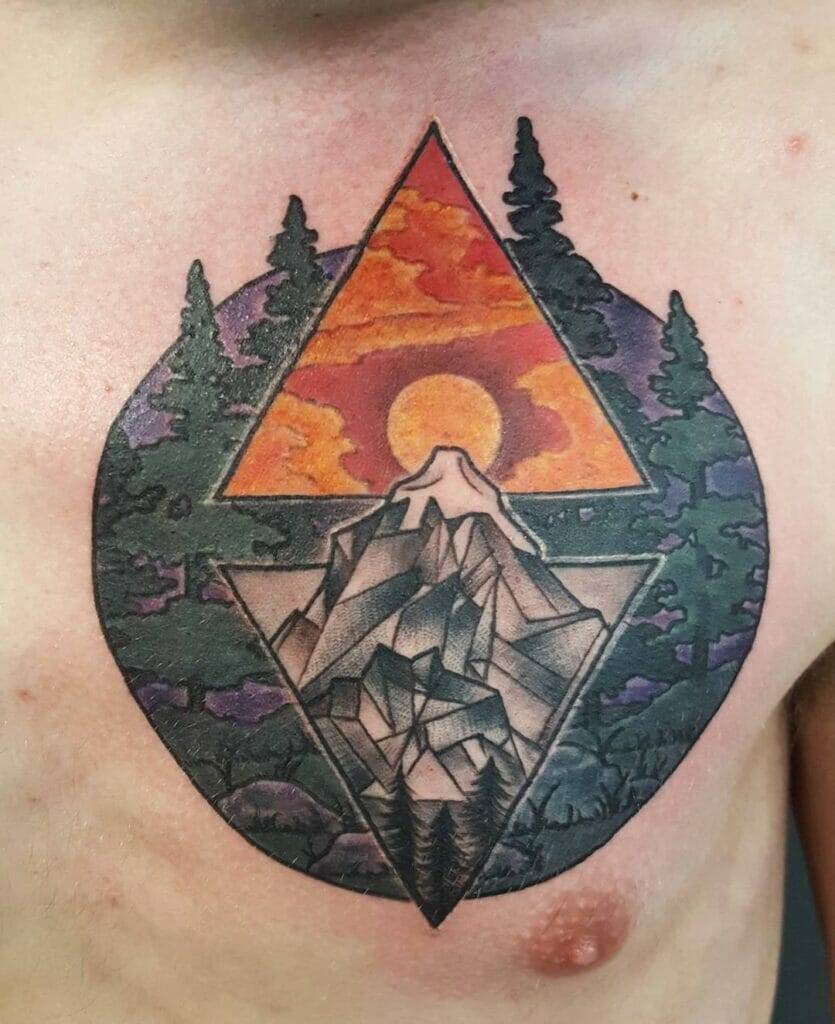
Sometimes, circumstances change, and you may find yourself wanting to change or remove an existing tattoo. There are several options available for covering up or removing unwanted tattoos.
Cover-up options are a popular choice for those who want to change the appearance of an existing tattoo. A skilled tattoo artist can work with you to design a new tattoo that incorporates and covers up the old design. This can be a great way to transform a tattoo that you no longer love into something new and meaningful.
Laser tattoo removal is another option for those who want to completely remove a tattoo. This process uses laser technology to break down the ink particles in the skin, allowing the body to naturally eliminate them over time. Laser tattoo removal can be effective, but it requires multiple sessions and can be costly. It’s important to research and choose a reputable removal specialist to ensure safe and effective results.
It’s important to note that both cover-ups and laser tattoo removal have their limitations. Cover-ups may not be possible for all tattoos, especially if they are large or have dark colors. Laser tattoo removal may not completely remove all traces of the tattoo, and some scarring or discoloration may remain.
Embracing Your Unique Style with a Custom Tattoo
In conclusion, tattoos are much more than just ink on skin. They are a form of self-expression, art, and personal significance. Whether it’s a small symbol or a full sleeve, tattoos hold emotional and personal meaning for those who choose to get them.
Finding inspiration for your tattoo design can come from various sources, such as online resources, art books, personal experiences, and collaborating with a tattoo artist. Choosing the right design involves considering factors such as size, placement, color vs. black and grey, style, and personal significance.
Coll Collaboration is essential in today’s fast-paced and interconnected world. It allows individuals and teams to work together towards a common goal, leveraging their unique skills and perspectives. Through collaboration, ideas are shared, problems are solved, and innovation is fostered. Collaboration also promotes a sense of unity and camaraderie among team members, leading to increased productivity and job satisfaction. In addition, collaboration enables organizations to tap into the collective intelligence of their employees, resulting in better decision-making and more effective problem-solving. Overall, collaboration is a powerful tool that drives success and growth in both personal and professional settings.


